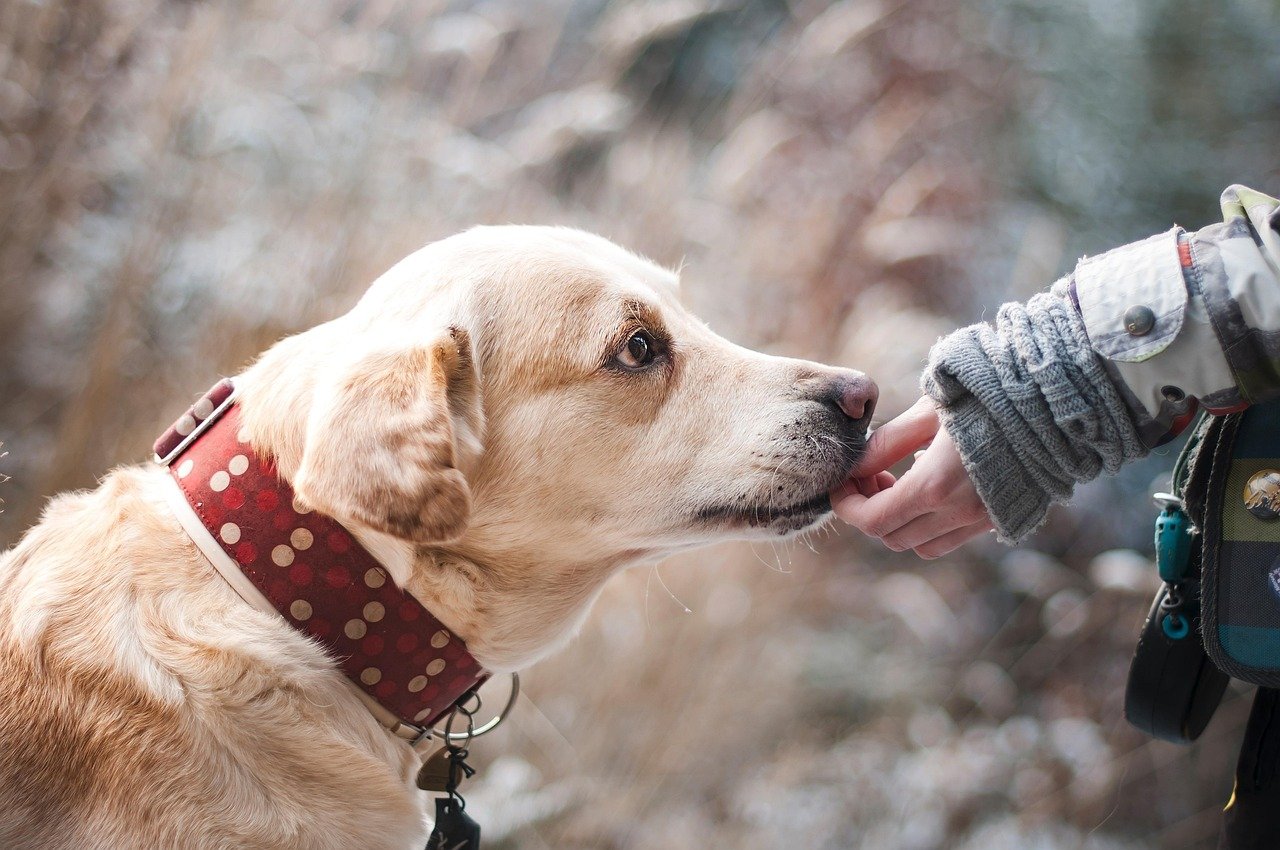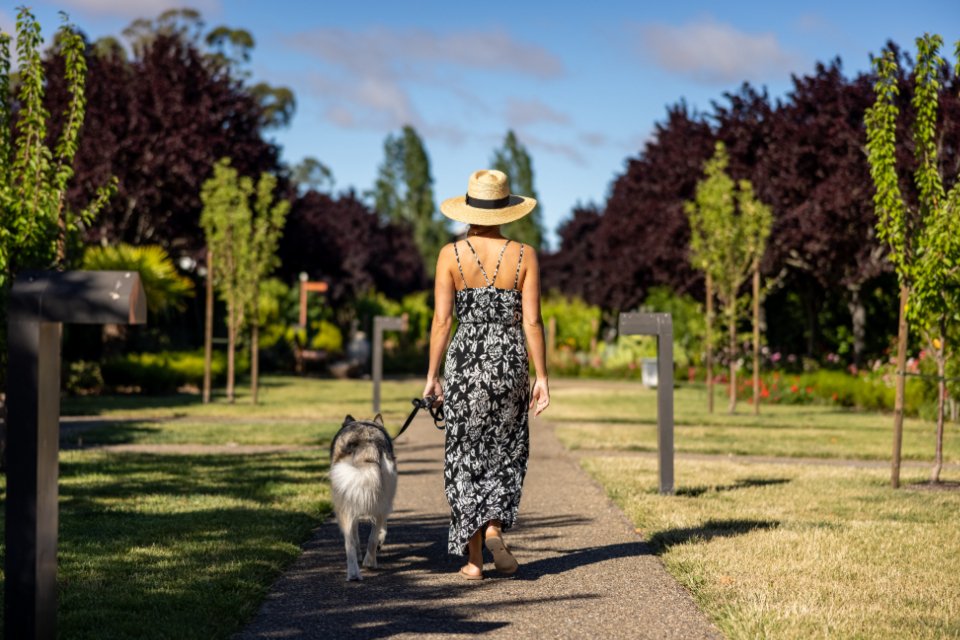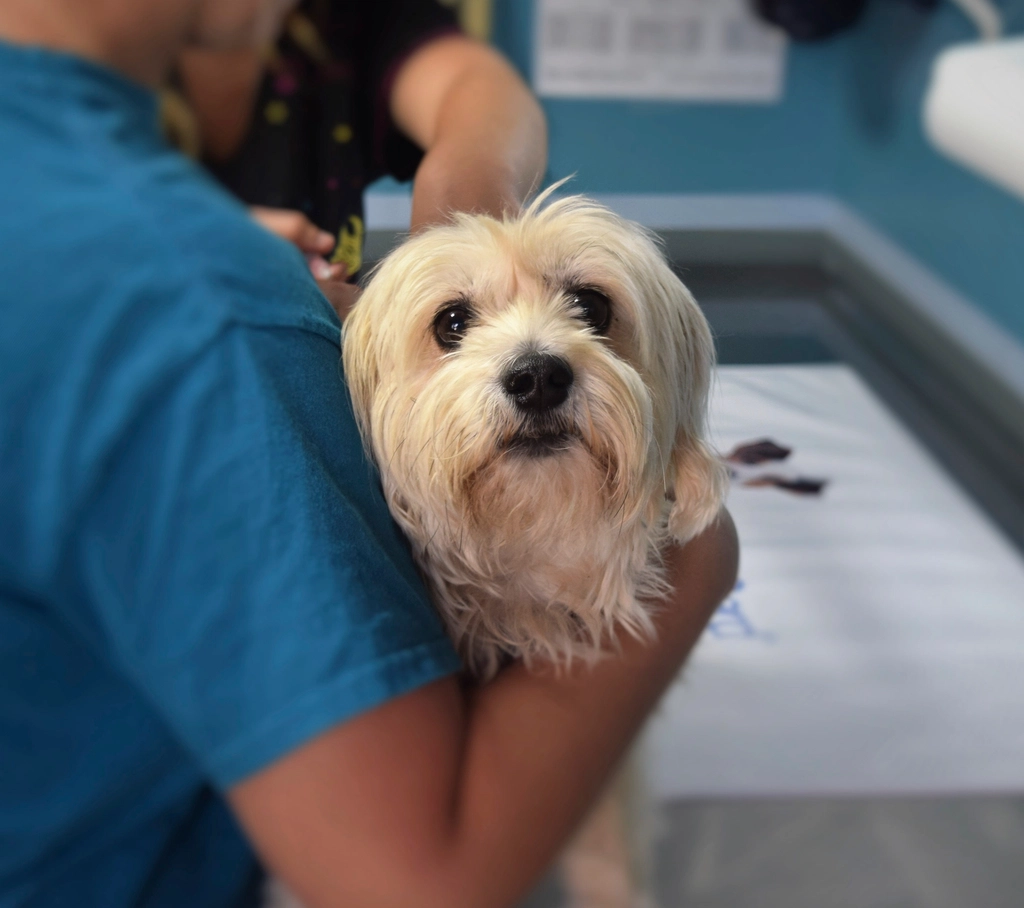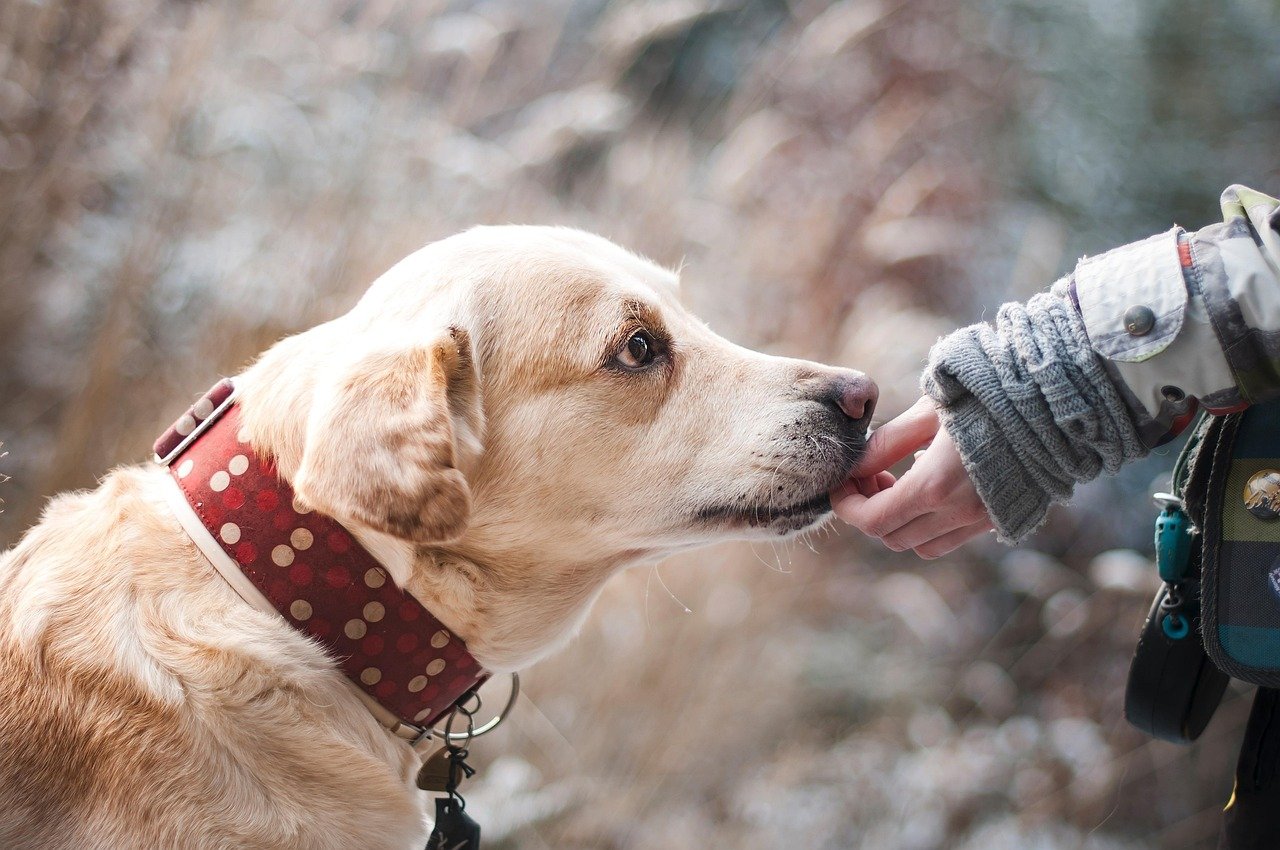You know that moment when you’re relaxing on the couch, and your dog suddenly leans over and starts gently nibbling on your arm with their front teeth? It looks almost like they’re eating corn off the cob, and the comparison isn’t far off. This adorable but sometimes puzzling behavior has a name – cobbing – and it’s way more common than you might think.
If you’re one of those dog owners scratching your head about this quirky habit, you’re definitely not alone. While it might seem odd to us humans, cobbing is actually one of the most endearing ways our furry friends communicate their feelings.
Understanding the Basics of Dog Cobbing

Cobbing is when dogs use their front teeth to gently nibble on objects, people, or even other dogs, resembling the way someone eats corn off a cob. This behavior involves dogs pulling back their lips and using their front teeth to give small, gentle nibbles. Cobbing involves using their incisors in a gentle, repetitive manner, and it’s completely different from aggressive biting or even regular chewing.
The motion itself is surprisingly delicate and rhythmic. Dogs use their incisors in this gentle, repetitive manner that’s softer and more repetitive, almost like a little massage from their teeth. Think of it as your dog’s version of giving you tiny love taps, except they’re using their teeth instead of their paws.
The Sweet Science Behind Why Dogs Cob
Newborn puppies cob at their mother’s teat to encourage milk production, and this primal action forms an essential part of their early development that later becomes a sign of affection. It’s pretty amazing when you think about it – this behavior that starts as a survival mechanism transforms into one of the sweetest ways dogs show love.
Cobbing is an affiliative social grooming behavior performed by dogs, which basically means it’s their way of bonding and showing care. Dogs engage in corn cobbing to show affection, similar to how puppies interact with their littermates or how adult dogs groom one another to strengthen their bond. When your dog gently nibbles on you, they’re essentially treating you like family – and that’s pretty heartwarming.
Recognizing Different Types of Cobbing Behavior
Not all cobbing looks the same, and understanding the variations can help you better interpret what your dog is trying to tell you. Cobbing often happens when your dog is in a relaxed state, and if your dog seems super focused and calm while doing it, that’s a good indicator it’s cobbing and not chewing or biting. The gentle, rhythmic nature is what sets it apart from other mouth behaviors.
Some dogs might get carried away, especially if they’re young or excitable, but the key difference is the pressure and intent. Healthy cobbing should never hurt or leave marks. Most dogs do it gently, and it doesn’t typically hurt you, other dogs, or them in the process, and as long as it stays soft and repetitive, it’s usually nothing to worry about.
When Cobbing Becomes a Comfort Mechanism
Dogs may nibble or cob as a self-soothing behavior to relieve stress and anxiety, stemming from their primal need for comfort, similar to how they would gently nibble at their mother’s breasts. Just like humans might bite their nails or fidget with their hair when nervous, dogs sometimes turn to cobbing as their go-to stress reliever.
Cobbing is often more about comfort or soothing themselves. If you notice your dog cobbing more during stressful situations – like when there are loud noises, new people around, or changes in routine – they might be using this behavior to calm themselves down. Since nibbling behavior is positive and soothing, some dogs use it as a means to self-soothe if they’re feeling anxious or uncomfortable, and if this is gentle nibbling with the dog seeming alright, then it’s probably fine.
The Social Aspect of Dog Cobbing
Cobbing might be a bonding behavior, and if your dog is cobbing you, they might just be showing affection as a gentle and non-demanding way of getting your attention. It’s their version of a gentle tap on the shoulder to say “hey, I’m here and I love you.” This makes cobbing one of the more polite ways dogs ask for attention compared to barking or pawing at you.
Dogs may choose to show their affection in various ways, and while some dogs love corn cobbing, others might show love by sleeping beside you, seeking physical contact, licking, sharing toys, or following you around. The beauty of cobbing is that it’s uniquely intimate – your dog is choosing to be gentle and close with you in their own special way.
Boredom and Mental Stimulation Needs
Many breeds are known for their high energy levels and intelligence, and without adequate mental and physical stimulation, dogs may engage in nibbling behavior as a means of alleviating boredom or frustration. Think of cobbing as your dog’s way of saying “I need something to do with my mouth and my mind.”
Most of the time, you’ll notice bored dogs exhibiting cobbing behavior together with barking and restlessness, and you can help your dog by providing proper exercise and mental stimulation. When dogs don’t have enough outlets for their energy, they often find creative ways to entertain themselves – and gentle nibbling can be one of those ways. The good news is that this type of cobbing usually decreases once you address their need for more engaging activities.
Medical Reasons Behind Excessive Cobbing
Excessive cobbing can cause hair loss and skin damage, and for some dogs, this may be during a period of stress or become a habit, especially common in anxious dogs or dogs that have suffered trauma. When cobbing crosses the line from occasional behavior to compulsive habit, it’s time to pay closer attention.
Sometimes corn cobbing can be a sign that your dog is dealing with allergies, and if your dog is nibbling at themselves more than usual, it could be because their skin feels itchy or irritated from environmental factors like pollen, dust, or certain foods. Excessive scratching, biting, and licking could indicate parasites such as fleas or skin conditions, and if you see your dog nibble and lick their paws continuously, it could indicate health issues like splinters, wounds, rashes, or allergies.
Warning Signs That Require Attention
If your dog starts cobbing more than normal or seems very intense about it, this could indicate that a problem is forming. If your dog is cobbing excessively or seems overly anxious while doing it, there might be an underlying cause worth investigating. The key is watching for changes in frequency, intensity, or the emotional state your dog displays while cobbing.
Warning signs include increased nibbling or more intense nibbling, increased aggression when cobbing is interrupted, and other symptoms like crying, whining, limping, or scratching alongside increased cobbing. If your dog begins cobbing frequently or starts nibbling forcefully enough to cause discomfort or skin irritation, it might be a sign of underlying issues like skin allergies, irritation, parasites, anxiety, or boredom.
Effective Training and Redirection Techniques
Excessive cobbing behavior can be gently trained out of any dog by starting with rewarding your dog for calm, non-cobbing behavior, especially if they tend to cob when excited or looking for attention. The secret sauce here is consistency and patience – you’re not punishing the behavior, but rather redirecting it toward something more appropriate.
The VCA Animals Hospital suggests redirecting their focus when your dog starts cobbing too often by providing a chew toy or bone for them to sink their teeth into. If your dog begins to nibble on inappropriate objects, calmly redirect their attention to an appropriate chew toy before the nibbling escalates, and reward your dog when they exhibit desirable behavior.
Creating the Right Environment and Routine

Effective management requires providing dogs with ample opportunities for exercise, mental enrichment, and appropriate outlets, with activities like agility, obedience training, or frequent walks helping fulfill their need for stimulation. Boredom is often a trigger for cobbing, so ensuring your dog has plenty of mental stimulation through puzzle toys, interactive games, or training sessions keeps their mind engaged.
Sometimes excess energy can lead to unwanted behaviors, so ensuring your dog gets enough physical activity through regular walks, playtime, or agility exercises helps reduce pent-up energy and creates more balanced dogs. If cobbing is linked to anxiety, try creating a peaceful environment using calming music, a cozy bed, or even calming dog clothes like pajamas or sweaters.
When to Seek Professional Help

It’s important to consult with a veterinarian to rule out any potential medical issues that may be contributing to nibbling or cobbing behavior, as addressing underlying health concerns is essential for comprehensive management. If cobbing gets aggressive or increases despite all efforts, consult a vet immediately to rule out any medical issue that may be contributing to cobbing or nibbling.
In most cases, cobbing is harmless and does not require concern, but if the behavior becomes excessive, aggressive, or is accompanied by signs of discomfort, it might indicate an underlying health issue that warrants a vet visit or consulting a professional dog trainer. If your dog is biting themselves or seems uncomfortable, itchy, or develops hair loss or a rash, they should be evaluated by a veterinarian.
Living Harmoniously with Your Cobbing Dog
Ninety percent of the time, cobbing behavior can just be ignored as it’s a normal and healthy way for your dog to interact and express themselves. Dog cobbing might seem like an odd quirk, but in most cases it’s a harmless, natural behavior that’s part of their unique personality, and as long as it doesn’t become excessive or cause harm, it’s typically just a sign that your dog feels safe and secure with you.
The beauty of understanding cobbing lies in appreciating it for what it really is – a gentle, loving gesture from your furry family member. If you’ve ever been corn cobbed by your dog, just know they’re using one of their communication tools to tell you how much they love you or want to play with you. Rather than seeing it as a problem to solve, you can choose to view it as one of those special quirks that makes your relationship with your dog uniquely yours.
Conclusion
Cobbing might look strange at first, but it’s really just another wonderful way our dogs show us love and communicate their needs. Whether your dog is seeking attention, self-soothing, or simply expressing affection, this gentle nibbling behavior is usually nothing more than their way of saying “you’re important to me.”
The key is knowing when cobbing is normal versus when it might signal something that needs attention. By understanding the difference and providing proper outlets for your dog’s physical and mental needs, you can ensure this endearing behavior stays sweet and manageable. Next time your dog gives you those gentle corn-cob nibbles, you’ll know exactly what they’re trying to tell you – and that’s pretty amazing, isn’t it?

Andrew Alpin from India is the Brand Manager of Doggo digest. Andrew is an experienced content specialist and social media manager with a passion for writing. His forte includes health and wellness, Travel, Animals, and Nature. A nature nomad, Andrew is obsessed with mountains and loves high-altitude trekking. He has been on several Himalayan treks in India including the Everest Base Camp in Nepal.






